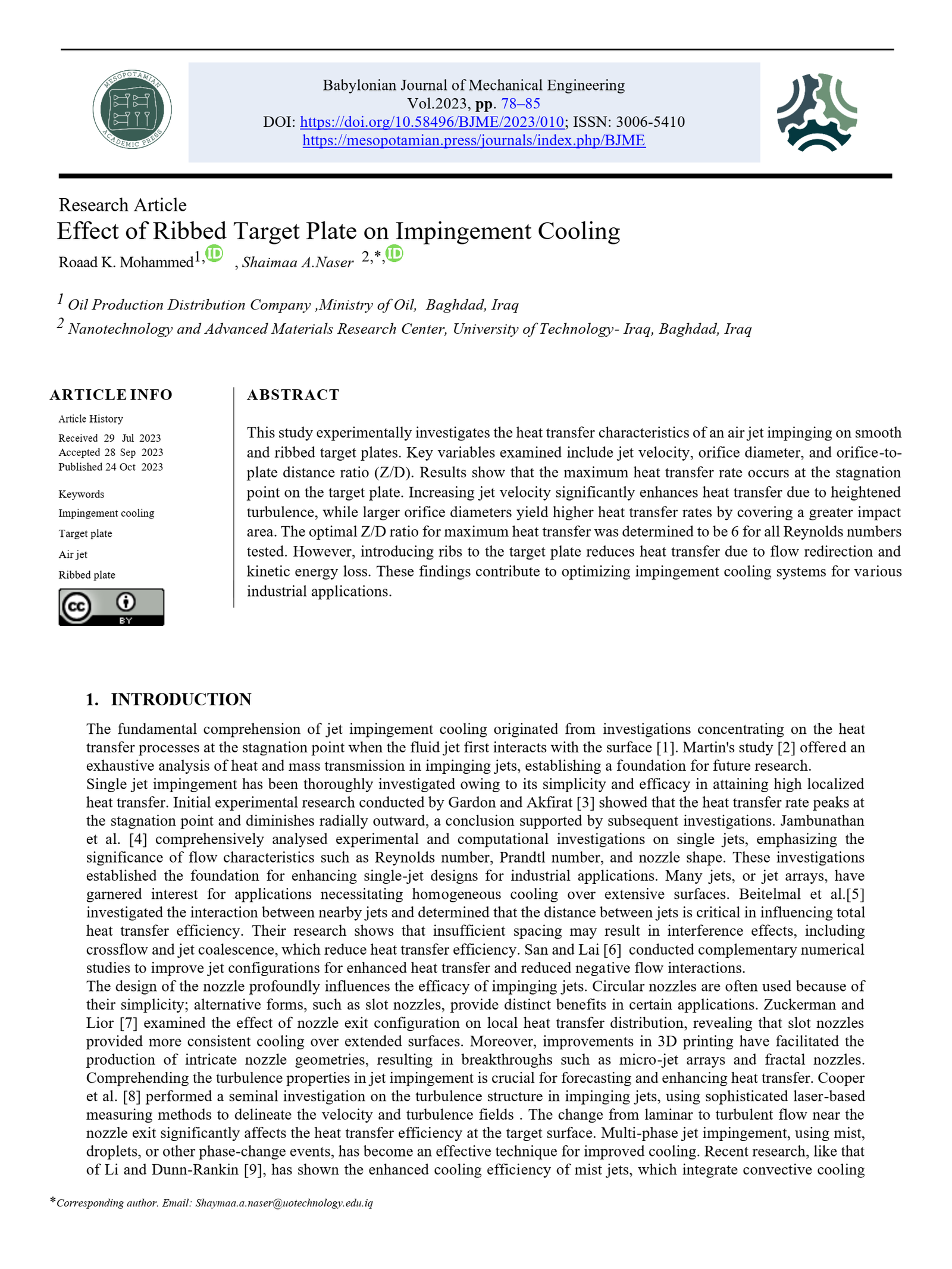Effect of Ribbed Target Plate on Impingement Cooling
Main Article Content
Abstract
This study experimentally investigates the heat transfer characteristics of an air jet impinging on smooth and ribbed target plates. Key variables examined include jet velocity, orifice diameter, and orifice-to-plate distance ratio (Z/D). Results show that the maximum heat transfer rate occurs at the stagnation point on the target plate. Increasing jet velocity significantly enhances heat transfer due to heightened turbulence, while larger orifice diameters yield higher heat transfer rates by covering a greater impact area. The optimal Z/D ratio for maximum heat transfer was determined to be 6 for all Reynolds numbers tested. However, introducing ribs to the target plate reduces heat transfer due to flow redirection and kinetic energy loss. These findings contribute to optimizing impingement cooling systems for various industrial applications.
Article Details
Issue
Section

This work is licensed under a Creative Commons Attribution 4.0 International License.
